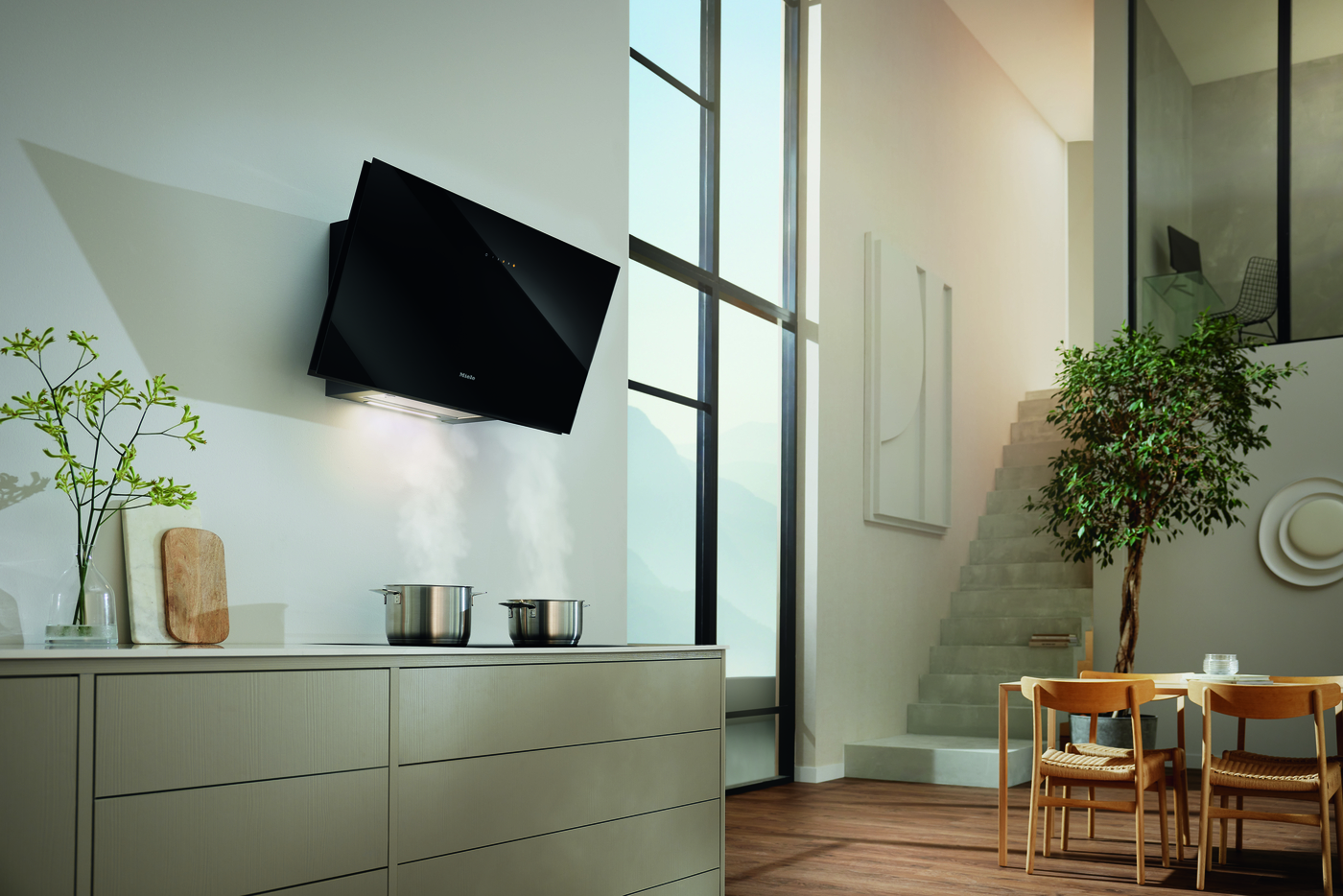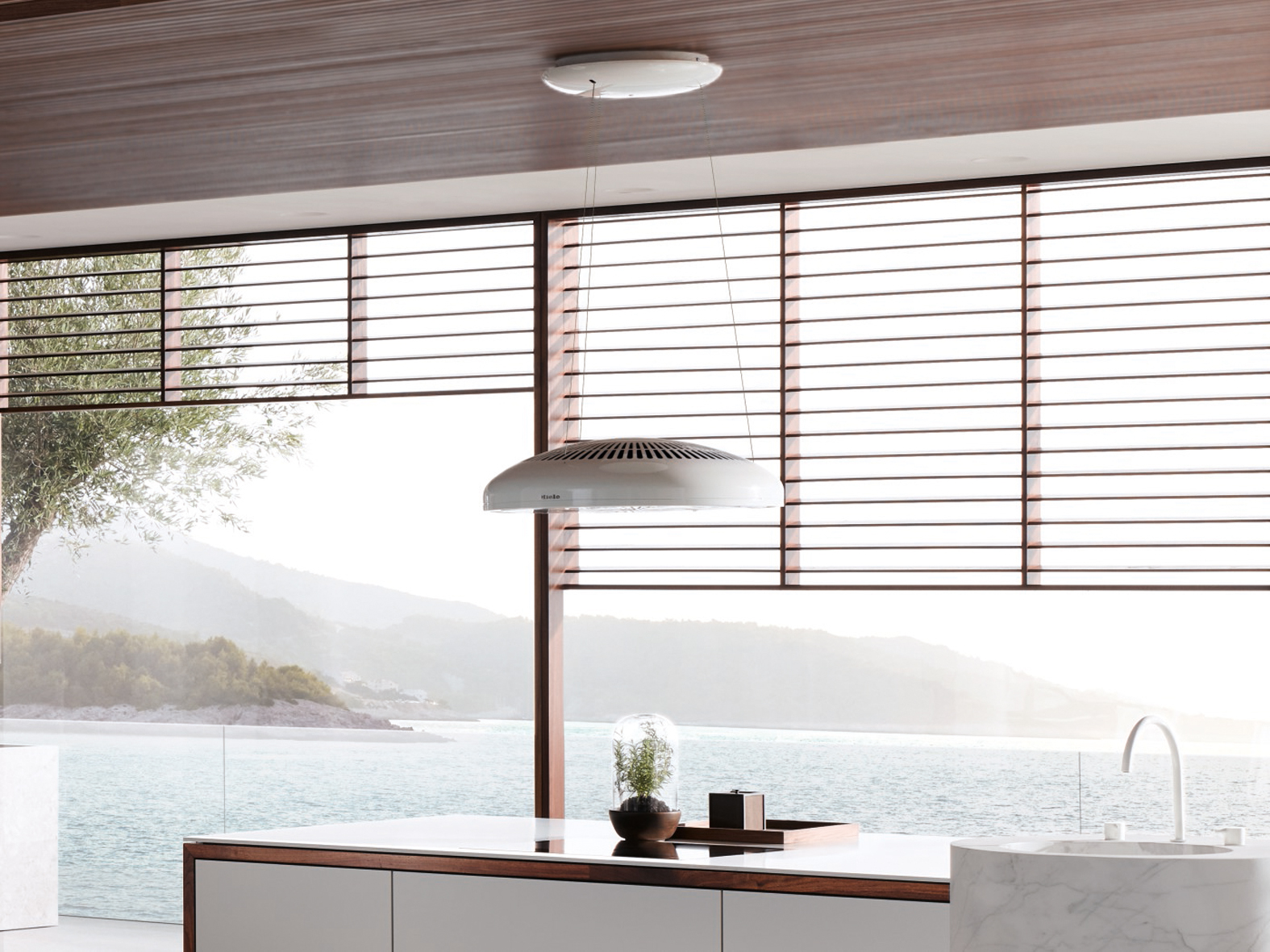Extraction is a crucial element for the kitchen, no matter what the design. From open plan, L or U shaped, to if you have an island, it is essential for removing vapours, grease and cooking smells from this much loved and enjoyed space.
Design as well as functionality is an important consideration, with the desire to complement a beautiful kitchen with an equally stylish cooker hood. A variety of models are available; from unobtrusive integrated hoods, impressive decorative designs that can be used to make a visual statement through to those that silently emerge and disappear at the touch of a button, creating the real wow factor. Selecting the correct model in terms of performance as well as aesthetic appeal is now more important than ever, with more of us choosing to create sociable, open plan kitchens.

Below, our extraction specialist, Lucy Thomas offers her expert advice on mastering the art of extraction.
“There are two different types of extraction models – recirculation or extraction. Recirculation is easier to install as the vapours are absorbed and filtered inside the kitchen using a charcoal filter to trap smells. Extraction is the ideal solution but if this is not possible, a good recirculating model is better than a poorly functioning extraction system.
Ducting is the number one cause for many problems. For efficient extraction, the ducting system should be short and straight, with smooth walled ducting and as few bends as possible. I would also recommend a minimum of 150mm diameter ducting.
Think about the sort of cooking you like to do – if you cook richer dishes with butter or oil, the cooker hood should be installed closer to the hob, to enable it to catch as much grease as possible, as grease is a heavy particle it does not rise as high as vapours.
Your cooker hood should also definitely cover at least the width of the hob. If you have an induction hob, your cooker hood should be wider than your hob as the vapours dissipate outwards. With gas the vapours rise vertically in a candle-like shape, so going for a cooker hood that matches the width of your hob will work effectively.

A ceiling hood can offer a minimalist solution, or add real wow-factor if choosing a decorative design such as our latest DAH 4970 Sienna in Concrete or Bronze Patina and DAH 4980 125 Gala Edition in Matt Black models.
The extraction's effectiveness depends on the ceiling height, as once the distance from hob to hood passes 130cm, the grease particles become too heavy to remove and drop back down into the kitchen; making the hood ineffective. If this is your hood of choice, some designers can build a housing above an island to install the ceiling extractor to overcome this, but be aware that it can cut into the ceiling line.

A downdraft hood is a great alternative if your ceiling is too high. They are also ideal for minimalistic designs, rising up from the island when in use and disappearing back into the worktop when not required. With this type of hood, the design of the hob can be key, as research has found that pots and pans placed on the front rings of a traditional style hob are not as successfully vented as those on the back. For this reason, a panoramic hob would be the best design if you go for a downdraft hood. This type of hob is narrower, offering four zones almost in a line to ensure cooking fumes and steam are effectively taken away.
If you desire advanced extraction technology in your kitchen, we have developed our exclusive Con@ctivity technology. This enables the cooker hood to ‘talk’ to the hob, automatically switching on when the accompanying induction hob is turned on. It proactively adjusts the power and lighting to create the ideal cooking environment and once the hob is switched off, the hood will also magically turn off.”


Planning Your Kitchen?
Discover the precision and accuracy of Miele with a complimentary 5 course taster menu that brings the appliances to life.



